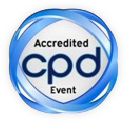
Biography
Biography: Julie Secombe
Abstract
Our work focuses on understanding the functions of the transcriptional regulator KDM5. Mammalian cells encode four KDM5 paralogs, KDM5A-D, three of which are clinically important: overexpression of human KDM5A or KDM5B are associated with cancer, and mutations in KDM5A, KDM5B or KDM5C are found in patients with intellectual disability. Yet the basic mechanisms by which this family of proteins functions in a physiological setting remain largely unknown. Taking advantage of the fact that Drosophila encodes a single, essential, KDM5 paralog, we have recently found that KDM5 regulates genes essential to mitochondrial function. This finding is significant because mitochondrial dysfunction is implicated in a large number of human diseases, including cancer and cognitive dysfunction. Importantly, KDM5 regulates mitochondrial function genes independently of its well-described JmjC domain-encoded histone demethylase activity. Instead, KDM5 requires its PHD motif that binds to histone H3 that is di- or trimethylated on lysine 4 (H3K4me2/3). Genome-wide, KDM5 binding overlapped with the active chromatin mark H3K4me3, and a fly strain specifically lacking H3K4me2/3 binding showed defective KDM5 promoter recruitment and gene activation. KDM5 therefore plays a central role in regulating mitochondrial function by utilizing its ability to recognize specific chromatin contexts.

